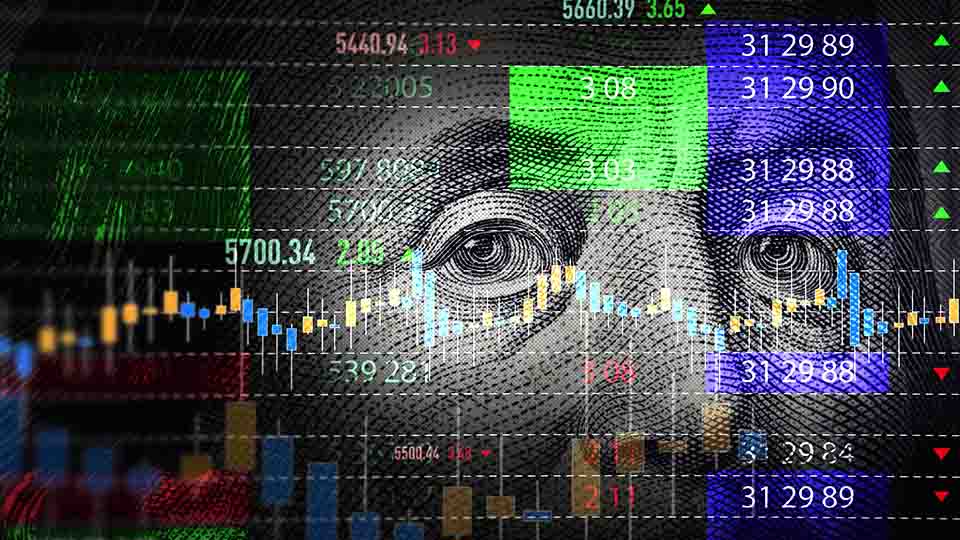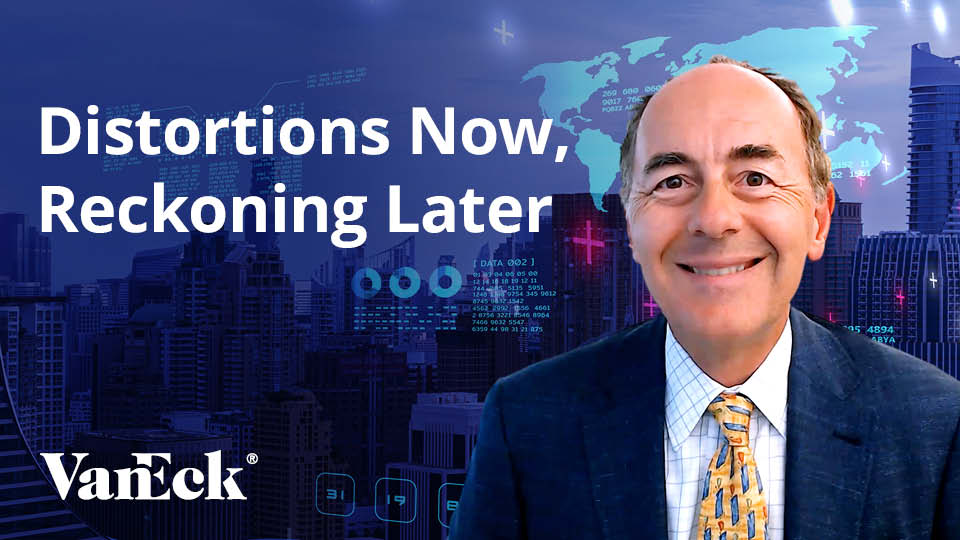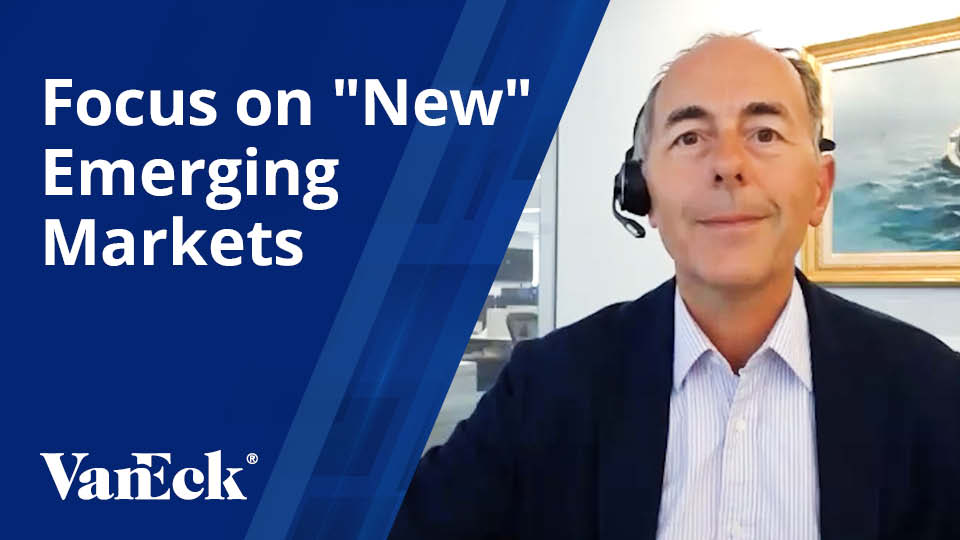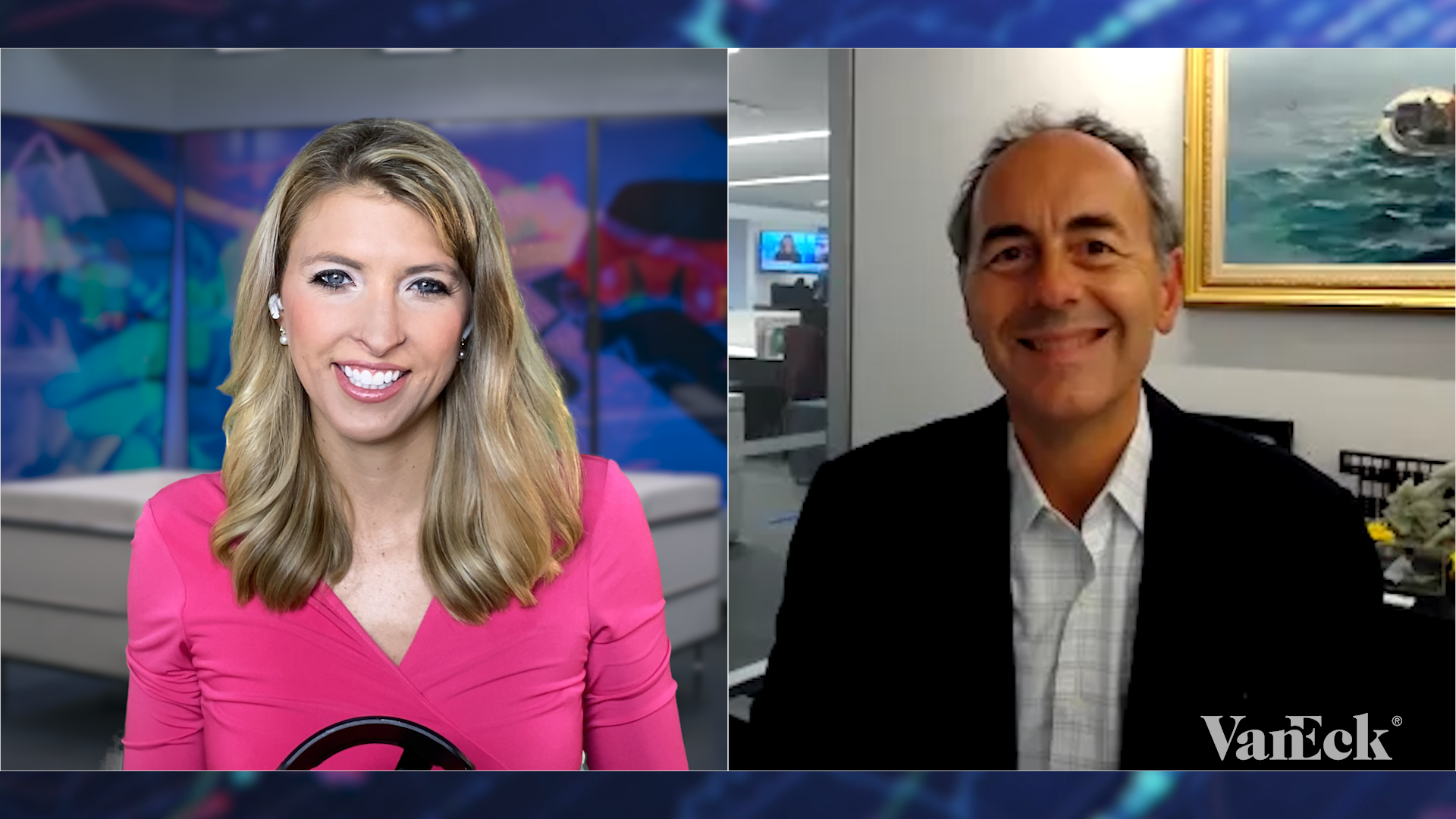How Is China’s Economy Doing?
21 May 2019
Watch Time 7:39
CEO Jan van Eck and Economist Natalia Gurushina discuss the state of China’s economy and highlight two key charts for understanding where it is in its growth cycle.
NATALIA GURUSHINA: Hello and welcome. My name is Natalia Gurushina. I'm an economist at VanEck Associates. I'm joined today by the company's Chief Executive Officer, Jan van Eck, to talk about his market reviews and market ideas. Jan, before we get to the trade war, the last time we talked, you argued that China's “drip stimulus” will have a positive impact on growth, perhaps with a lag. Can you please update us on this?
JAN VAN ECK: Sure. Well, it happened. It happened. The way we look at China, and there might be a good chart on this, is to look at manufacturing purchasing managers’ index, or PMI, and the non-manufacture, which more represents a service economy. And what had happened with the manufacturing PMI is it turned into negative territory, which means a number lower than 50. There was a slowdown in China at the end of 2015 when that manufacturing PMI was negative, and it was negative at the end of last year. As you said, what we argued is that the stimulus from the Chinese government would mean that would turn up positive in Q1 or Q2 of this year. And indeed, right at the, almost on calendar, at the end of March, it turned positive.1 Services PMI has been positive 54-ish, whatever, throughout the last five years. That part of the “New China” economy continues to chug along.
GURUSHINA: Given that the relationship, trade relationship between China and the US hit a road block, how do you see China's growth going forward? Do you see any change perhaps in the stimulus?
VAN ECK: Right. Of course, the markets celebrated the return of Chinese growth and Chinese equities, up until a couple of weeks ago, were the best performing in the world. The easy stage is over. The question is now that we’re in positive territory, are we firmly in positive territory or not?
To answer that, I think we have to look at the other side of the equation in China, which is the money supply situation and interest rates. And there again, I think there's a graphic which nicely summarizes what's happening in China, which basically shows that the interest rates to state-owned enterprises has been relatively constant over the last couple of years, but the last year, interest rates to private companies went almost straight up. The question was, at the end of last year, would they stop tightening? Would private companies in China who create all the jobs start getting money more easily or not? And those interest rates have stopped going up.2 It looks like the trend in the stimulus is working. The question is, there are a lot of risks to that scenario going forward. Trade obviously being one of them. That's where we are today.
GURUSHINA: Okay. One of the concerns on my side last year was, and I just wanted to go back to that second chart that you've mentioned, that, on the monetary side, monetary policy side, stimulus, the transmission mechanism didn't really work as intended.
VAN ECK: Right.
GURUSHINA: I'm happy that finally we are seeing the results. I think what you mentioned is that the fact that spreads started to narrow down, especially for the private sector, is a big deal. Because let's face it, private companies were the major collateral damage from the deleveraging campaign that we saw in 2016, 2017.
VAN ECK: Right. I guess the bottom-line question is, and this is to oversimplify, what should investors do from here on out? I think if you oversimplify again, and say: "All right, what are central banks going to do?" I think they are all basically not planning on doing a whole lot because they're relatively stimulative already. The Fed has put its rates on pause. Europe is still very slow in doing any kind of normalization there. And China is doing the drip stimulus as you said. But I think most of that's reflected in financial asset prices. I think it could be a boring, in a way, or sideways, rest of 2019.
GURUSHINA: One thing I would like to mention here, since you mentioned the reaction of central banks, major central banks, is that central banks, at the end of 2018, reacted very strongly to the deterioration in global financial conditions. One thing which looks very different right now, is that global financial conditions improved massively and sharply. If you look at the relationship, again, we saw the lags, between global manufacturing and global liquidity, I think the outlook, barring the unexpected, the outlook for global manufacturing should actually improve on that particular metric going forward.
VAN ECK: I think that's right. It's a better, nicer picture. And policymakers are biased towards stimulus because they're worried, but how much of that's priced in? We don't know. We have this trade war risk on the horizon. Let's just talk about that really quickly.
I think, you have different kind of scenarios. The base case scenario for the trade war is they work out something that keeps both sides unhappy, right? No one really gets what they want. We're kind of bumbling along, but we both make marginal progress because we realize we're mutually dependent. That's probably the base case. I think there's been a super deal out there. I think that's a low probability. I'm a little bit of a skeptic that China's prepared to change its entire economic structure just to play better in global trade rules. Then I think you have this sort of trade war downside, which I think is also a minority scenario, a low probability scenario, but we don't know yet. And that would be very negative for growth if the policy makers didn’t counteract that.
GURUSHINA: Yeah. And let me mention maybe a few channels here, because it's not just a direct impact if the high tariffs are here to stay. It's not just that impact on China's growth, but other regions are watching very carefully, first of all potential spillovers for emerging markets. The impact on the weaker Chinese currency, on regional currencies, right? There is a very strong correlation between the two. But also, Europe is watching very carefully because of the exports connection, especially the Nordics, Germany. I think, yes, it's a minority, it's a small probability. It's not the baseline scenario, but that's something that we need to watch very carefully.
VAN ECK: One of our clients was actually saying, Europe is so dependent on Asian growth, it's almost like, why bother? How interlinked the world is.
GURUSHINA: But, they still do. Jan, thank you so much for your very interesting conversation, and thank you very much for joining us. For more information from, and for more insights from VanEck specialists, please visit us at vaneck.com/subscribe. Thank you.








